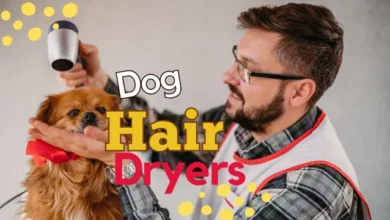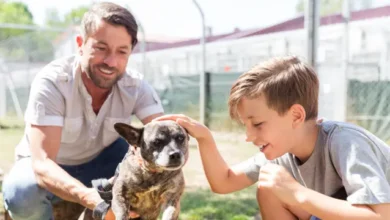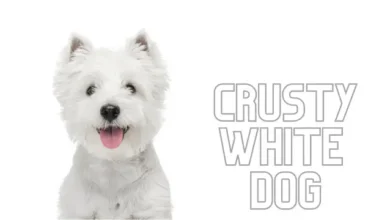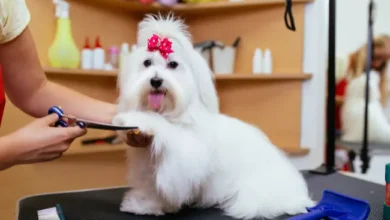What about Rally-O?
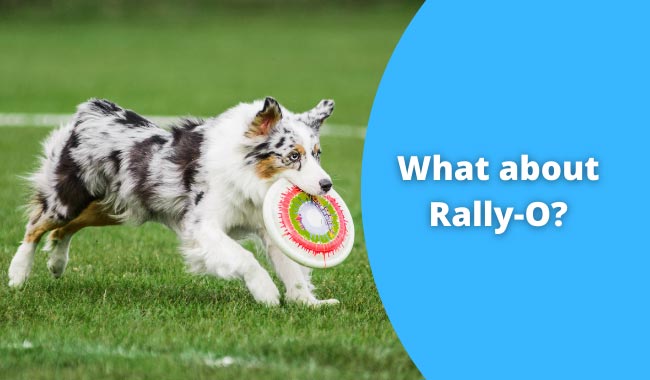
MixbreedDogs.com is an Amazon Associate, and we earn from qualifying purchases.
Now that the Canadian Kennel Club is jumping on the Rally-O band-wagon, we’re seeing a real surge of people becoming interested in the sport. And why not? It’s obedience and it’s FUN! If you haven’t tried it before, you should check it out. And now, I’ll share the most important thing you need to know in Rally-O… okay, the two most important things…
#1. You should be having fun
Your dog should be having fun. It doesn’t matter which club you participate in, there are absolutely NO corrections allowed in or around the rally ring. If your dog has learned how to work with you using positive methods, this shouldn’t be a problem.
Read More: Beagle Pitbull Mix – Is This Cross Right for You?
#2. It’s all about heel position
Your dog really needs to understand where “heel” is and how to get back there if things go wrong. In the novice levels of all the clubs, the vast majority of the points are lost in poor heeling. Tight leash – PING, Out of Position – PING… those nasty points can add up in a hurry!
So, how do you teach a solid heel position without correcting the dog? It’s not hard, but it takes some patience to start with. The basic idea is: reward when the dog is in the right place, ignore when the dog is not in the right place. Many people give up just before the “light bulb moment” for the dog. But once they have the idea that THEY can influence the receipt of cookies or play or praise, they start trying to figure out what makes you pay up. Then you’ve got it made. You end up with a dog that prefers to be in heel (that’s where all the good stuff comes from).
One of my favorite dog training exercises is “doodling” – I don’t know who first coined the phrase, but it’s a good one! Start with your dog sitting in heel position. Take one step forward “up sit”. Reward when the dog is again sitting in heel. When you first start, you can lure, hold a treat in your hand just ahead of the seam of your pant leg (where you want the dog’s nose to be), as you move forward, so will your hand, so will the dog. When you can do “up sit” easily, start doing a one-step turn to the right, then a one-step turn to the left (this one is harder, since the dog has to scoot back to stay straight in heel position). One step to the right. (Oh, look! You’ve just taught the side step right!) One step backwards. (Okay, that’s an Excellent level move… but why wait to add it to your list of accomplishments?)
When your dog can “doodle”, start adding a second step, then a third – presto! You’ve got a dog who heels! Once your dog is doing multiple steps and sitting when you stop, start being inconsistent. Wait a minute! inconsistent?!!! Yup. Sometimes you give a reward while you’re still moving. Sometimes you’ll stop after 3 steps, sometimes 30. Sometimes you’ll throw a toy and race the dog to it. Vary your reinforcement both in what you reward with and when you reward, this prevents boredom – nothing encourages lagging like boring heelwork, and it’s a LOT of work to fix that problem!
Oh, the other bonus to doodling? You can teach heeling in your kitchen when it’s snowing outside. Then when you’re done with your training session for the evening, you can go to your computer and look up the various rally association websites and see what else you can train while you wait for spring!
Thanks for reading!!!!
Related Posts:
https://www.petdogplanet.com/teddy-bear-dog/
https://www.petdogplanet.com/short-legged-dog/
https://www.petdogplanet.com/most-trainable-dogs/
https://www.petdogplanet.com/velcro-dog/
